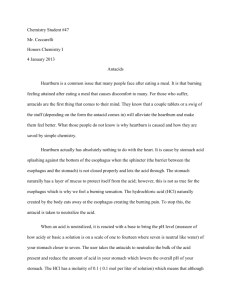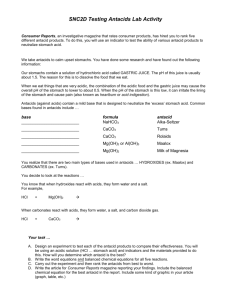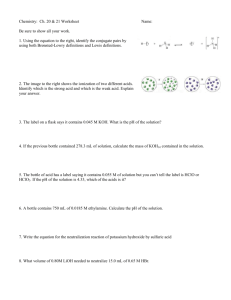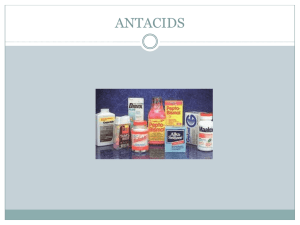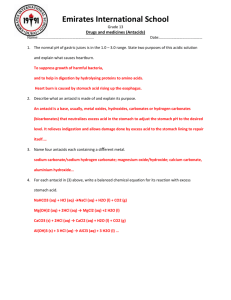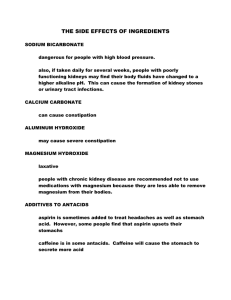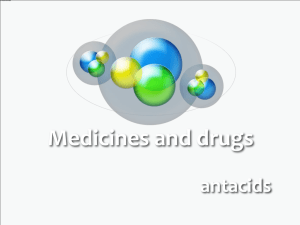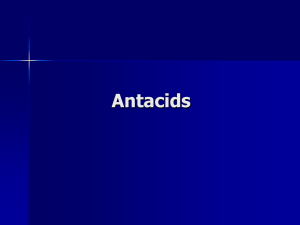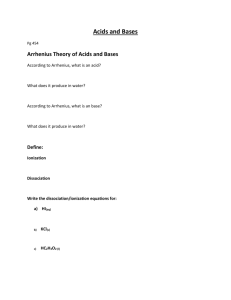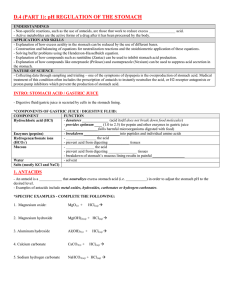Antacids - CarverChemistry
advertisement
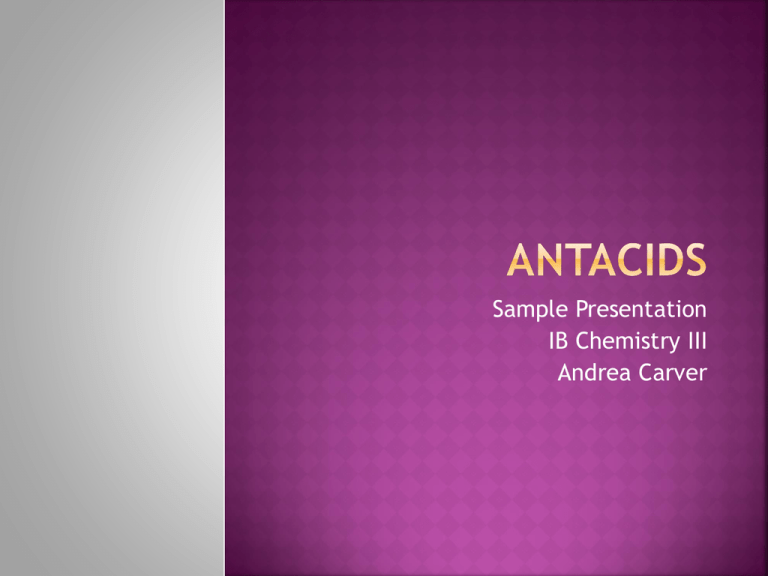
Sample Presentation IB Chemistry III Andrea Carver D.2.1 State and explain how excess acidity in the stomach can be reduced by the use of different bases. Presentations should include list of objectives for topic. The pH along the length of the gastrointestinal system must be controlled. Digestive enzymes work best at unique optimum pH’s. (Pepsin in stomach.) The stomach maintains an acidic pH 1-2 via production of HCL . Acidic environment also kills bacteria. Presentations should include summary of content from textbook. Can be caused by alcohol, smoking, stress, anti-inflammatory drugs. Possible outcomes: Acid Indigestion Heartburn Ulcer Presentations should include images which help clarify concepts. Antacids are weak bases which neutralize excess stomach acid (HCL). Examples: Metal Oxides Metal Hydroxides Carbonates Hydrogen Carbonates The reaction of a strong acid with a weak base yields a salt and water. (The acid is neutralized.) Magnesium hydroxide and aluminum hydroxide can act as antacids. Write an equation for the reaction of HCL with each of these antacids. Identify which antacid neutralizes the greater amount of acid if 0.1 mol of each antacid is used. Suggest why potassium hydroxide is not used as an antacid. Presentation should include an exercise from the textbook or practice packet. Al(OH)3+ 3HClAlCl3 + 3H2O Mg(OH)2+ 2HCl MgCl2+ 2H2O Based upon the balanced chemical reaction, 1 mol of Al(OH)3 will neutralize 3 mols of HCl. So .1 mol Al(OH)3 will neutralize .3 mols of HCl. .1 mol MgCl2 will only neutralize .2 mol HCl. Potassium hydroxide is a strong base and would be corrosive to the GI system. The reaction of carbonates and hydrocarbonates with a strong acid will produce a salt, water, and carbon dioxide. Example: CaCO3 + 2HCl NaCl + H2O + CO2 The carbon dioxide gas may cause bloating and flatulence. Antifoaming agents (such as dimethicone) are used to overcome this side effect. Antacids may also contain alginates which prevent reflux. How can bases reduce excess acidity in the stomach? Via Neutralization Reactions! Weak bases can react with excess HCl in the stomach producing salt, water, and sometimes CO2. In this way, excess acid is neutralized, and stomach pH will be reduced to normal levels. Presentation should include standards addressed as questions. Answers should be clear and concise. You should be prepared to provide answers and assist students with all problems on your topic from Medicines and Drugs practice packet.
